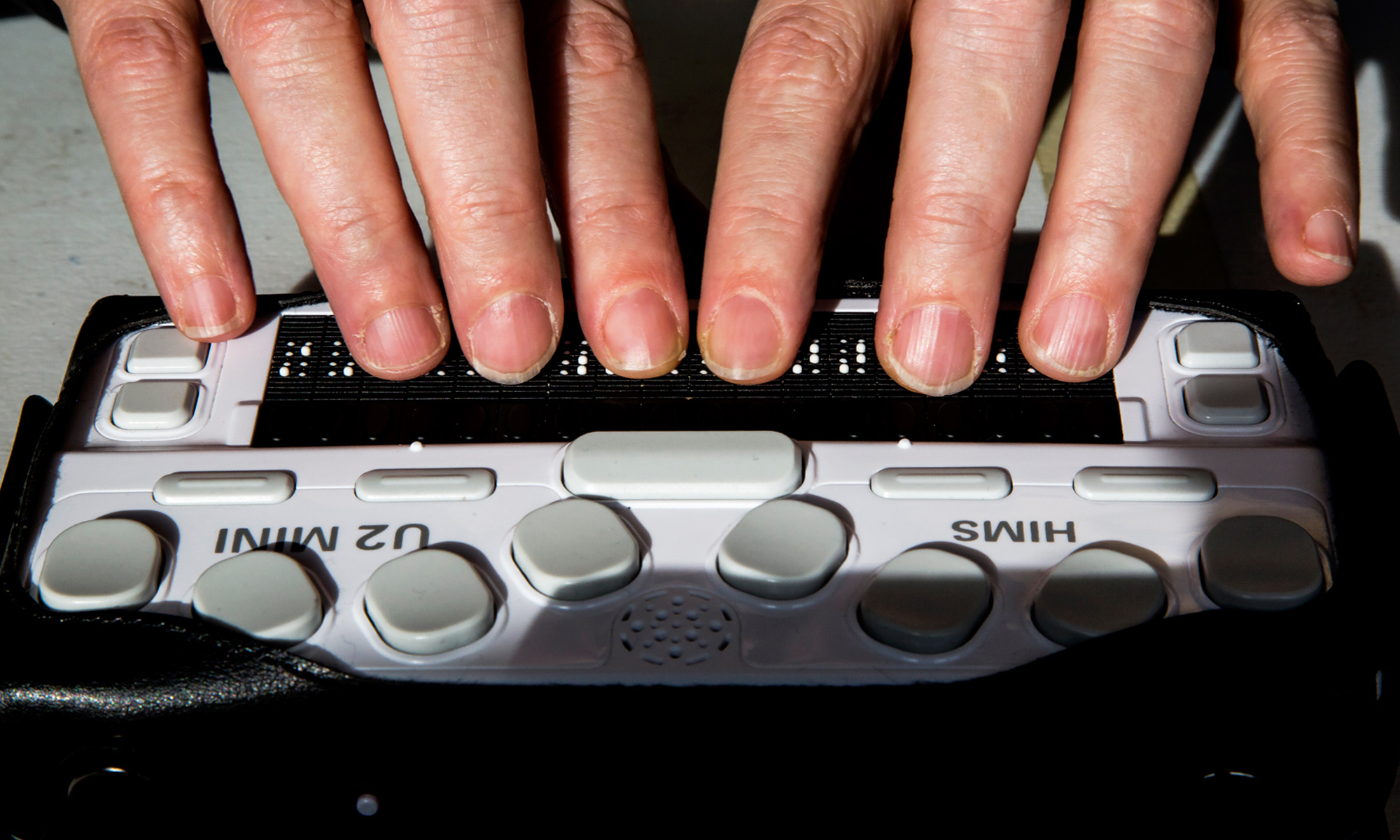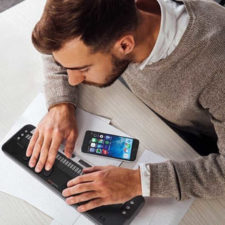Empowering Independence With Assistive Modern Technology for the Blind
The combination of assistive technology right into the lives of individuals with visual disabilities represents a significant advancement in promoting independence and self-sufficiency. From ingenious display viewers to innovative clever walking canes, these devices not only improve everyday navigating and interaction but also encourage customers to engage meaningfully in various aspects of life. As we explore the myriad advantages and real-world applications of these modern technologies, it comes to be essential to analyze the hidden factors that add to their effectiveness and the potential for future advancements in this vital area.
Overview of Assistive Technology

The advancement of assistive innovation is grounded in concepts of inclusivity and empowerment. Developments in software, hardware, and sensory improvements offer users with alternatives customized to their particular needs. From display readers that convert message to speech, to responsive devices that share details via touch, these devices transform the means individuals involve with their surroundings.
In addition to sensible applications, assistive modern technology cultivates greater social incorporation and involvement in numerous fields, consisting of education and learning and work (Assistive technology for the blind). As r & d remain to develop, the potential for assistive modern technology to better boost the lives of aesthetically damaged individuals remains appealing, paving the method for a more fair culture where everyone can prosper
Kinds Of Assistive Devices
A range of assistive gadgets have actually emerged to support individuals with visual disabilities, each developed to meet specific requirements and improve daily functioning. These tools vary from low-tech solutions to state-of-the-art technologies, supplying varied alternatives for users.
Low-tech gadgets consist of magnifiers and large-print products that help in analysis and writing. Braille tools, such as Braille stylus pens and slates, enable tactile analysis and communication. Alignment and movement help, like white walking canes, aid customers browse their environment safely.
On the greater end of the range, digital magnification systems and display readers provide considerable support. Electronic magnifiers allow individuals to expand message and pictures on displays, while display readers convert electronic material into manufactured speech, assisting in access to details on computers and mobile phones.
Mobile phone applications also play a crucial duty, supplying functions like message recognition and navigation help. Wearable modern technology, such as clever glasses furnished with augmented fact, is becoming an appealing device to improve situational understanding.
Benefits of Assistive Innovation
The integration of assistive technology substantially improves the quality of life for people with visual disabilities. These modern technologies empower users by promoting freedom, enabling them to navigate their atmospheres better and execute day-to-day jobs with greater convenience. For circumstances, screen readers and zoom software program permit individuals to access digital details, fostering expert and instructional chances that might have previously been out of reach.
Furthermore, assistive tools such as clever walking canes and GPS applications provide real-time navigating assistance, improving flexibility and security. This raised freedom not only enhances self-confidence but additionally urges social engagement, enabling individuals to get involved more completely in their neighborhoods.
Assistive modern technology additionally assists in communication, aiding users get in touch with others through voice acknowledgment and text-to-speech applications. This capacity is crucial for maintaining relationships and accessing critical info.
Furthermore, the personalization choices readily available with many assistive modern technologies guarantee that customers can tailor gadgets to their details demands, even more boosting functionality and efficiency. In general, the benefits of assistive modern technology for individuals with aesthetic disabilities are profound, promoting a much more comprehensive society where every person can seek their desires and objectives.
Study and Success Stories
Highlighting the transformative impact of assistive technology, various situation researches show just how individuals with visual problems have actually successfully incorporated these devices right into their lives. One compelling instance entails an university student who made use of display analysis software to navigate academic products and on the internet sources effectively. This technology not just facilitated her education however also boosted her confidence in joining discussions and group projects.
One more study includes an expert that utilizes a smartphone application made for navigating and item recognition. By utilizing this application, he has actually restored freedom in both his personal and workplace, enabling him to commute independently and engage with coworkers better.
Furthermore, a retired person shared her experience with braille e-readers, which enabled her to access a vast variety of literary works and remain linked with her area with publication clubs.
These success stories highlight the vital function of assistive innovation in promoting self-reliance, enhancing high quality of life, and promoting social combination for people with visual disabilities (Voice-activated assistive devices). By embracing these ingenious tools, customers can overcome challenges and confiscate possibilities that add to their individual and professional fulfillment

Future Fads in Assistive Innovation
Technology in assistive technology is positioned to redefine the landscape of assistance for people with aesthetic problems. Emerging fads stress the integration of expert system (AI) and artificial intelligence, which boost the functionality of devices that help with navigating and details availability. As an example, AI-driven applications are now with the ability of interpreting aesthetic information in real-time, allowing customers to engage with their setting a lot more separately.
Additionally, the development of wearable modern technology is advancing rapidly. Smart glasses outfitted with enhanced fact (AR) can give audio summaries of environments, transforming my company exactly how customers engage with public areas. These tools not only advertise freedom however likewise foster social addition.
In Addition, the Net of Things (IoT) is making homes smarter, permitting seamless connectivity between assistive gadgets and everyday appliances. This connection empowers individuals by making it possible for voice-activated controls and computerized feedbacks tailored to specific requirements.
Final Thought
To conclude, assistive modern technology plays a critical function in empowering people with visual problems by improving click resources their independence and involvement with their surroundings. The varied variety of tools and applications offered not only helps with navigating and communication yet likewise promotes social assimilation and chances for personal and specialist growth. As innovations continue in this field, the possibility for improving the lifestyle for those with aesthetic impairments will certainly broaden, promoting better autonomy and empowerment.
